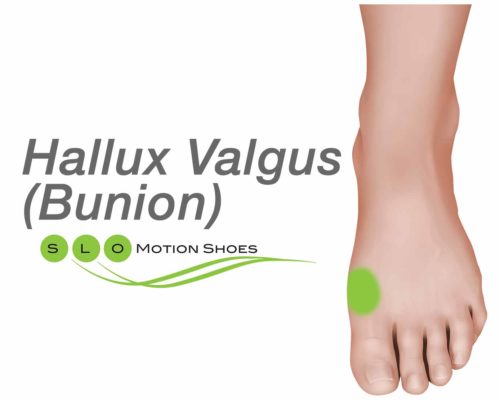A bunion is an unnatural, bony bump that forms on the joint at the base of your big toe. An imbalance in the pressures of bearing and shifting your weight can make the big toe joint unstable. A bunion develops as the big toe deviates towards and pushes against the next toe, forcing the base of the big toe to push outward to form the bump.

Symptoms
Swelling, redness or soreness around the big toe joint
Persistent or intermittent pain
Thickening of the skin at the base of the big toe
Development of calluses due to excess pressure and friction from shoes
Restricted movement of the big toe
Causes
Genetic factors, which influence the development of the foot structure
Foot injury or an occupation that puts extra stress on the feet
Deformities present at birth
Routinely wearing tight, high-heeled or too-narrow shoes
Arthritis, especially rheumatoid arthritis, increases the risk
Treatment
Goals are to relieve stress on the big toe joint and correct imbalance of pressure on the foot. Treatment options vary depending on the severity of your bunion and the amount of pain it causes. Surgical correction is an option if conservative treatment does not provide relief.
Wear roomy, comfortable shoes with plenty of space in the toe area
Wear a supportive shoe with orthotic arch support
Use an orthotic device inside the shoe to relieve stress on toe joint
Padded shoe insert for additional comfort
Take an over the counter pain medication, such as ibuprofen (Advil, Motrin) • or naproxen (Aleve) to relieve discomfort
Apply ice to area to relieve soreness
The two most common conditions involving the big toe joint include Hallux Valgus ,or Bunion, and Hallux Rigidus, or Arthritis. To understand both of these conditions it is important to understand some of the mechanics of foot motion.
The first metatarsalphalangeal joint or “big toe joint” plays a very important role in our normal foot motion. The walking cycle gait has three distinct phases: heel contact, midstance and propulsion. The midstance phase is critical in positioning the foot in stable position just prior propulsion at heel lift. The active lifting of the heel off of the ground initiates the propulsive phase of walking. Excessive foot pronation or rolling-in increases the amount of stress on the big toe joint as the heel is lifted off of the gournd during propulsion. It is this abnormal stress on the big toe joint that can lead to the development of bunion and arthritis deformities.
Why an individual develops bunion deformity rather than arthritis in not fully understood. Differentiating these two conditions from each other is usually straight forward. In a bunion deformity the first metatarsal displaces toward the midline of the body and the big toe pushed into the second metatarsal causing a prominent “bump”. In arthritis there may be some deformity to the metatarsal bone but the toe position is generally straight and most importantly the big toe is “stiff”. Both of these conditions can occur simultaneously on both feet but most commonly will be seen on one.
Treatment for both of these conditions is very similar. Decreasing foot pronation at midstance with a supportive shoe and orthotic relieves stress on the big toe joint. Padding placed on the orthotic arch support can additionally relieve some of the stress on the big toe joint. Using a shoe with adequate width as well as a toe box region free of seems relieves the pressure on the big toe joint. For hallux rigidus a stiffer sole with a rocker sole construction decreases the bending stress on the joint.
Bunion (Hallus Valgus) Discussion Board
Select a View
Click on the view that most represents the area of discomfort that you are experiencing. Drag your cursor over your area of concern to obtain a brief description of the potential condition.
Suggested Product
-

Reverse Morton Orthotic
$75.00Reduces the pressure over the sesamoid bones during walking.Select options







